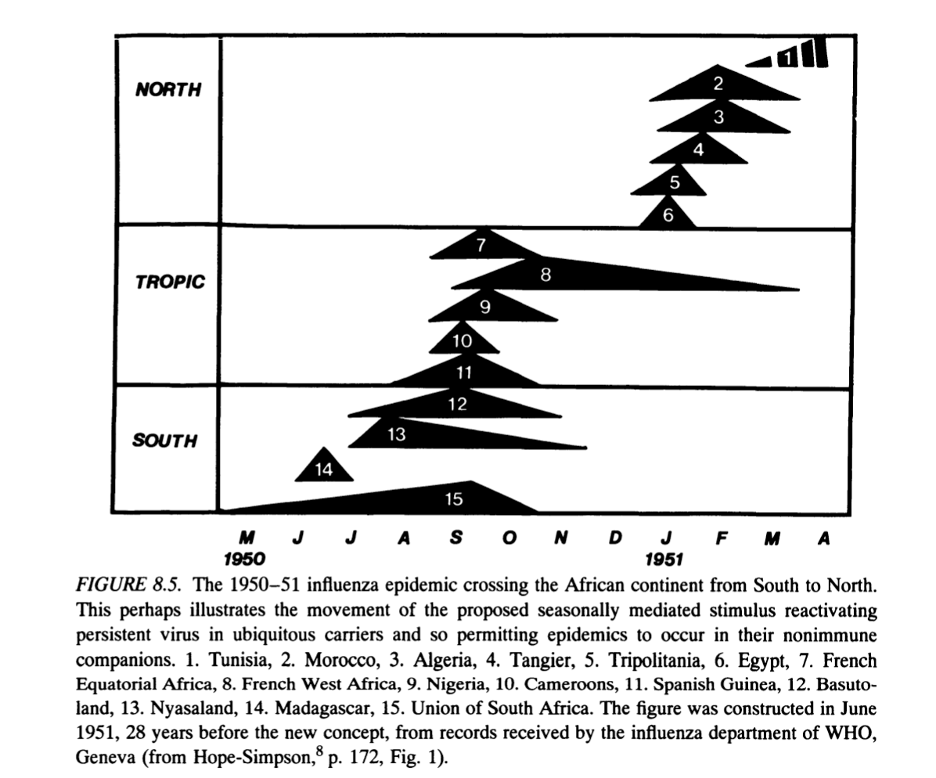Is this 2020?
Consider the following scenario…
It is the beginning of the calendar year.
A heretofore new and unknown virus is circulating the globe, causing significant morbidity and mortality.
Half-way through the year, a second wave emerges, thanks in part to better (PCR-based) diagnostics. But with high numbers of false positives.
The CDC issues the following recommendations:

Sound familiar?
Is this COVID-19, circa 2020?
No.
It is the H1N1 swine flu, circa 2009.
The virus initially known as “swine flu” was first identified in a pediatric patient in California in April, 2009. The outbreak accelerated, with cases being reported across the country in New York and other states.
Antiviral drugs and PPE were quickly distributed to relevant hotspots. By early June, the WHO declared a global pandemic.
Even more interestingly, the FDA approved a real-time PCR-based test to detect H1N1 virus under an Emergency Use Authorization.
By April, 2010, approximately 12,000 Americans died from H1N1. By August, 2010, the WHO declared the H1N1 pandemic over.
Nobody knows exactly how many people died from H1N1. The WHO provides estimates ranging from 150,000 to 575,000 deaths globally. Approximately 80% of these deaths were in patients under 65 years of age.
Today, H1N1 continues to circulate around the world, exhibiting the well-established predictable seasonality that other viruses exhibit.

Viral seasonality is not a new concept. Source: Hope-Simpson, R.E. The Transmission of Epidemic Influenza, 1992.
So what are we saying?
First, we should not in any way downplay the significant morbidity and mortality that coronavirus-19 is causing, and will continue to cause, especially in those older than 65 years of age and with co-morbidities.
This is a nasty virus, and we absolutely need effective vaccines and therapies as soon as possible.
There is also emerging a population of “Long COVID” patients who survive the initial infection, but clearly experience longer-term health issues, especially CNS and cardiovascular issues.
Secondly, H1N1 and covid-19 are different viruses, with different patient demographics. They belong to completely different viral phyla (Negarnaviricota and Pisuviricota, respectively).
Unusually, H1N1 does not disproportionally infect adults over 60 years of age. Also, the pneumonia caused by H1N1 could be either viral or bacterial. Hence, both antivirals and antibacterials were being prescribed for patients until one or the other cause could be confirmed.
Regardless, one of the important lessons we have to learn (or remember) is that viral epidemics are nothing new.
The most recent H1N1 epidemic lasted 19 months, and ended in August 2010 (the “Spanish Flu” epidemic of 1918-1920 being the first known H1N1 epidemic).
We are experiencing one now. And, while we will get through this one eventually, there will be another in the future.
But whether or not we can get past this viral epidemic in 19 months is an open question. We do not know the size of the vulnerable population in the months preceding the H1N1 epidemic. And we note that masks were rarely used, and lockdowns were very rare and localized.
To our knowledge, the strategies of wide-spread mask usage and lockdowns have never been shown to positively influence Gompertz-style waves of viral infection…a quantitative pattern that has been known since the mid-19th Century. Indeed, we do not entirely know how this epidemic will evolve as we ease lockdowns.
Will these strategies delay our collective development of immunity, as we did against H1N1?
Are the vulnerable who are being protected in 2020 create a massive pool of “dry tinder” next season?
Conclusion
If our only source of news is the mainstream and social media channels, then these nuanced questions will never be understood and answered. It takes more than a 20-second soundbite to review epidemiological history and the lessons it teaches.
But clearly, once all of this is over, we need to compare and contrast our responses to this and previous epidemics, and make some tough decisions about how we respond to the next one.
Post scriptum
What about that picture of soldiers distributing masks?
That was taken in 2009 in Mexico City.

